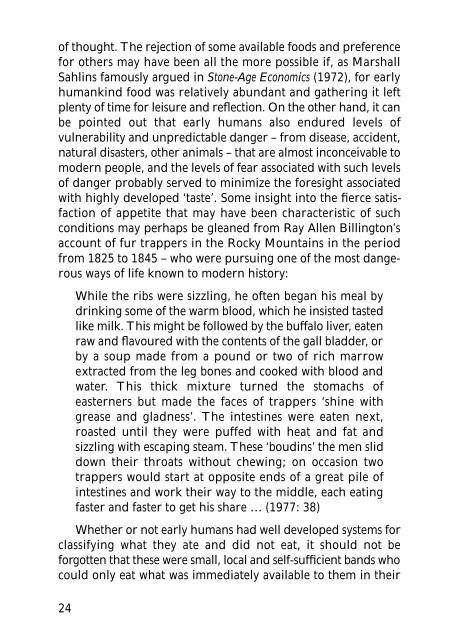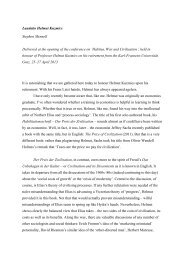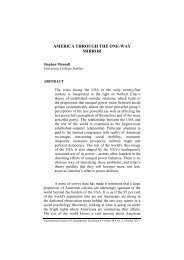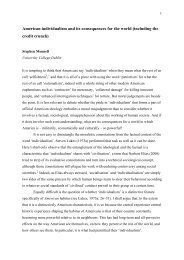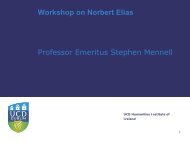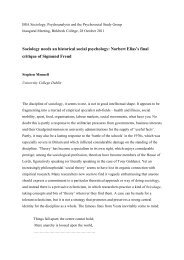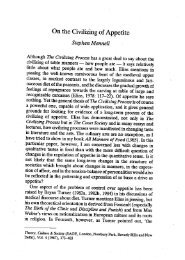Taste, Culture and History - Stephen Mennell
Taste, Culture and History - Stephen Mennell
Taste, Culture and History - Stephen Mennell
- No tags were found...
You also want an ePaper? Increase the reach of your titles
YUMPU automatically turns print PDFs into web optimized ePapers that Google loves.
of thought. The rejection of some available foods <strong>and</strong> preferencefor others may have been all the more possible if, as MarshallSahlins famously argued in Stone-Age Economics (1972), for earlyhumankind food was relatively abundant <strong>and</strong> gathering it leftplenty of time for leisure <strong>and</strong> reflection. On the other h<strong>and</strong>, it canbe pointed out that early humans also endured levels ofvulnerability <strong>and</strong> unpredictable danger – from disease, accident,natural disasters, other animals – that are almost inconceivable tomodern people, <strong>and</strong> the levels of fear associated with such levelsof danger probably served to minimize the foresight associatedwith highly developed ‘taste’. Some insight into the fierce satisfactionof appetite that may have been characteristic of suchconditions may perhaps be gleaned from Ray Allen Billington’saccount of fur trappers in the Rocky Mountains in the periodfrom 1825 to 1845 – who were pursuing one of the most dangerousways of life known to modern history:While the ribs were sizzling, he often began his meal bydrinking some of the warm blood, which he insisted tastedlike milk. This might be followed by the buffalo liver, eatenraw <strong>and</strong> flavoured with the contents of the gall bladder, orby a soup made from a pound or two of rich marrowextracted from the leg bones <strong>and</strong> cooked with blood <strong>and</strong>water. This thick mixture turned the stomachs ofeasterners but made the faces of trappers ‘shine withgrease <strong>and</strong> gladness’. The intestines were eaten next,roasted until they were puffed with heat <strong>and</strong> fat <strong>and</strong>sizzling with escaping steam. These ‘boudins’ the men sliddown their throats without chewing; on occasion twotrappers would start at opposite ends of a great pile ofintestines <strong>and</strong> work their way to the middle, each eatingfaster <strong>and</strong> faster to get his share … (1977: 38)Whether or not early humans had well developed systems forclassifying what they ate <strong>and</strong> did not eat, it should not beforgotten that these were small, local <strong>and</strong> self-sufficient b<strong>and</strong>s whocould only eat what was immediately available to them in their24


